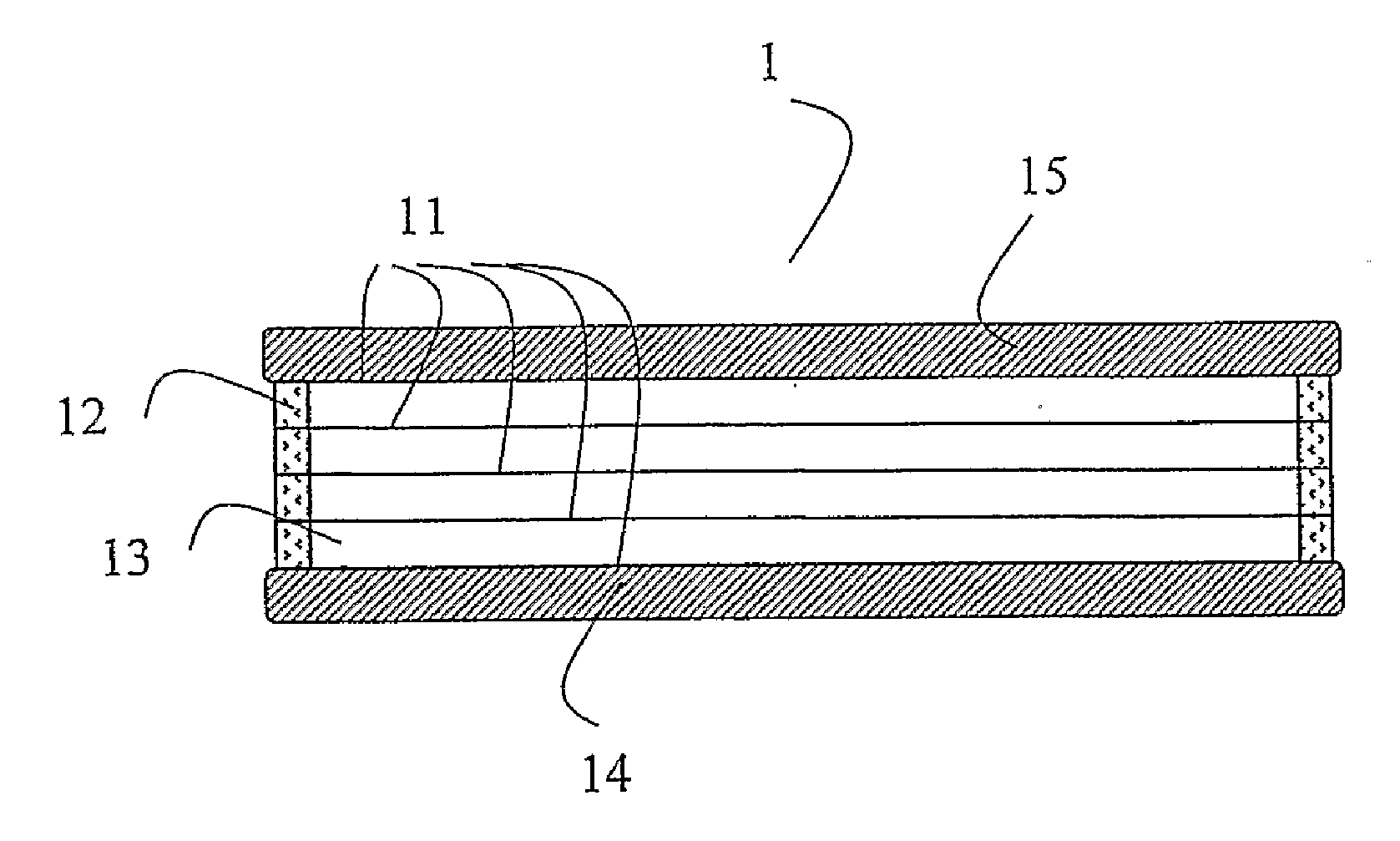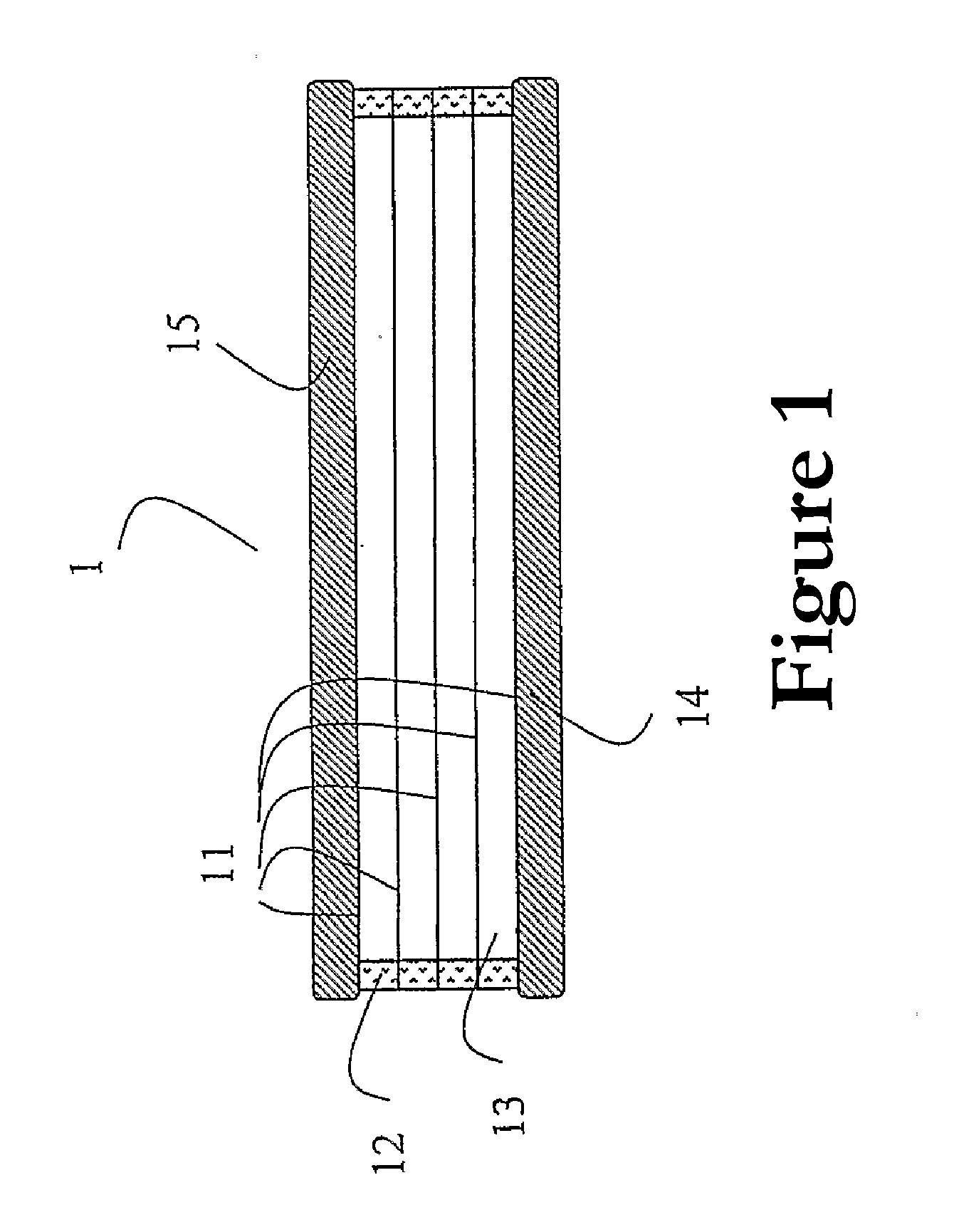Gas filled insulation construction panel
- Summary
- Abstract
- Description
- Claims
- Application Information
AI Technical Summary
Benefits of technology
Problems solved by technology
Method used
Image
Examples
embodiments
[0031]For the first embodiment, samples of a square surface with a side of 150 mm have been prepared. The first and the second construction board were replaced by glass panes from an ordinary float window glass of a thickness of 3 mm. The partitions of four chambers were made of a soft aluminum sheet of the alloy 1050 manufactured by Braun GmbH Folien-Pragetechnik, thickness 0.021 mm. Between the chambers, TGI composite window spacers manufactured by Technoform Glass Insulation GmbH were used, height 12 mm. The joint between spacers and sheets was sealed by butyl rubber GD115, manufactured by Komerling chemische Fabrik GmbH. The sample was filled with a mixture of gases 24.7% R23 and 75.3% R32 (vol.) with thermal conductivity of 0.012 W / mK, supplied by Linde plin d.o.o. At the end, the circumference of the test panel was puttied with polysulfide putty GD1 6 manufactured by Komerling chemische Fabrik GmbH. The sample was measured heat transfer both in vertical and horizontal position...
PUM
 Login to View More
Login to View More Abstract
Description
Claims
Application Information
 Login to View More
Login to View More - Generate Ideas
- Intellectual Property
- Life Sciences
- Materials
- Tech Scout
- Unparalleled Data Quality
- Higher Quality Content
- 60% Fewer Hallucinations
Browse by: Latest US Patents, China's latest patents, Technical Efficacy Thesaurus, Application Domain, Technology Topic, Popular Technical Reports.
© 2025 PatSnap. All rights reserved.Legal|Privacy policy|Modern Slavery Act Transparency Statement|Sitemap|About US| Contact US: help@patsnap.com


